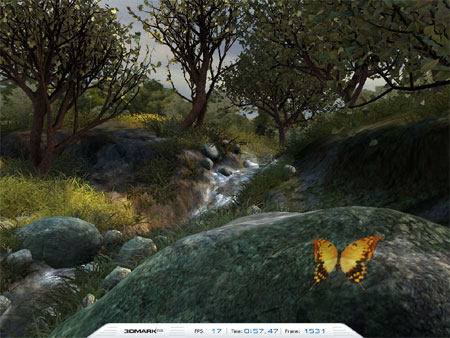De mannen van Tom's Hardware hebben een artikel online gezet waarin wordt ingegaan op de betrouwbaarheid van de nieuwe 3DMark03 benchmark. Nog geen dag na de release kwam nVidia, voorheen nauw betrokken bij de ontwikkeling, met stevige kritiek op de benchmark. Het probleem ligt onder andere in het gebruik van de in de praktijk weinig gebruikte pixelshaders 1.4 waardoor kaarten die deze functionaliteit niet ondersteunen het moeten doen met inefficiënte versie 1.1 pixelshaders.
Initieel dachten de meeste mensen dat nVidia bang was dat de GeForce FX niet de Radeon 9700 Pro kon bijhouden, maar dat blijkt niet het geval te zijn. De nieuwe 42.68 Detonator drivers blijken bijna 50 procent sneller te zijn dan zijn voorgangers in 3DMark03 waardoor de GeForce FX ongeveer 500 punten hoger scoort dan de Radeon 9700 Pro. Waardoor nVidia van standpunt is veranderd wat betreft 3DMark zal gissen blijven, maar het zal duidelijk zijn dat de resultaten van 3DMark03 met een korreltje zout genomen moeten worden:
NVIDIA's sudden change of mind is baffling - up till now, 3D Mark was always a well regarded test among the manufacturers, including NVIDIA. What initially looked like an attempt to hide the FX's weaker test performance cannot be confirmed with the appearance of the new driver. Perhaps NVIDIA feared a dwindling influence on the development of 3DMark. Especially with the new "The way it's meant to be Played" program, NVIDIA tries to increase its influence on game developers.
Of course, gamers with NVIDIA cards benefit from NVIDIA's involvement, as they get better graphics and performance in real games. Owners of non-NVIDIA cards might have something else to say though. At the NVIDIA Developer Forum, it became clear the Pixel Shader (2.0) code doesn't run equally well on all hardware. Ultimately, it all boils down to the fact that developers need to use special code for different chips in order to ensure good performance on all possible platforms. This explains the attention that NVIDIA devoted to developers. Is the main reason for NVIDIA's criticism at 3D Mark 2003 due to Futuremark's refusal to use optimized code? In this case, NVIDIA is right in saying that 3D Mark is unrealistic - for one thing, because it was developed without NVIDIA's input, and for another thing, because it's difficult to imagine that actual "neutral" code would be useful for performance evaluation.


:strip_exif()/i/1045000502.jpg?f=fpa)